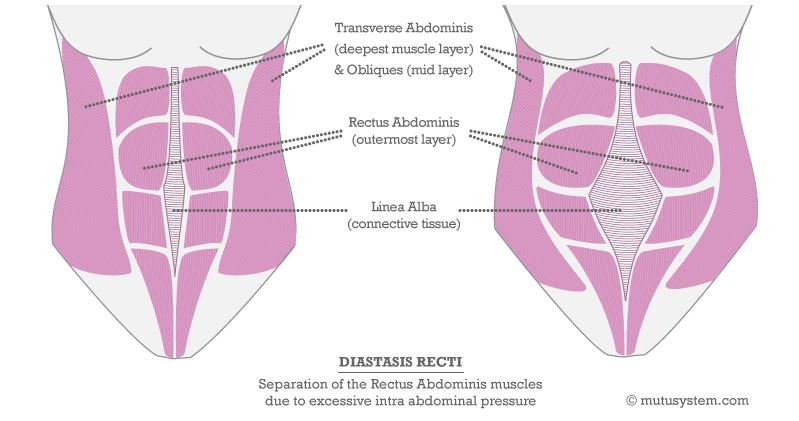Prenatal Foundations
THE CORE + UPPER BODY CONNECTION
Upper back tension, stiff shoulders and tight chest muscles can sure cause discomfort and frustration during pregnancy but did you know it can also impact our breathing and core function?
This week’s practice focuses on releasing stiff upper body muscles and connecting to our deep core muscles. Both of these things are important to maintaining support for your growing body and reducing strain that naturally occurs during pregnancy.
The 4 Core Muscles, the Diaphragm, Transversus Abdomins, Pelvic Floor and Multifidis work together as a pillar of support for your pelvis and spine. They work best when they are in a stacked (or neutral) position.
Postural shifts and tension around the mid-upper back can pull the thoracic spine a bit forward and up (ribs thrusting forward) which pulls us out of a stacked position, making it harder for the core muscles to work together as effectively and can also put strain on the abdominal muscles.
REDUCING STRAIN ON THE ABDOMEN
Diastasis Recti is the over thinning of the connective tissue that runs down the centre of the abdomen, connecting to the halves of the outer layer of abdomen muscles.
This stretching is a completely normal part of pregnancy, in order to create space for baby. We DO however want to minimize the strain and pressure placed on your abdomen and pelvic floor to reduce the severity of Diastasis Recti. (See below for some daily tips)
It is important to focus on softening and releasing tension in the abdomen as well as proper engagement to provide support without overly straining or pulling on the muscles.
EFFECTS OF DIASTASIS RECTI CAN BE:
Increased pressure on the pelvic floor
Incontinence
Lower back pain
Pelvic pain (SI Joint and Pubic Bone)
Weakened and Compromised Core Support
AT HOME TRY THIS:
Follow along with this Core Engagement Tutorial to safely and effectively engage the core and reduce pressure on the abdominal wall
When reaching your arms over head keep your ribs heavy instead of letting them lift up/back arch as your arms lift
When getting into bed or laying down on the soft, roll to your side first and then move onto your back instead of leaning straight back.Reverse this when getting up- roll to your side first and then press up
Practice Core/Diaphragmatic Breath, as this helps to reduce Intra Abdominal Pressure, meaning too much pressure pushing against the abdominal wall.






